A New Keith Haring Exhibition With 125 Works Opens at The Broad in Downtown Los Angeles

The seeds to launch a Keith Haring exhibition at The Broad museum were planted 10 years ago in France.
In 2013, Los Angeles billionaire Eli Broad traveled to Paris to view 250 works by the New York street artist on display at the Musée d’Art Moderne de la Ville de Paris. The idea was the art collector and philanthropist, who was constructing a new contemporary art museum in downtown Los Angeles, would make a splash by organizing a similar exhibition around the time his art institution opened in 2015.
More from WWD
For various reasons, the exhibition never happened. Then Broad, who made his fortune in the home-building and insurance industries, passed away in 2021 at age 87. But his dream never died.
On Saturday, The Broad unveiled the “Keith Haring: Art Is for Everybody,” exhibition with 125 art and archival pieces created during a decade of prolific energy when Haring made waves by taking art from the penthouse to the street. This is the first time Haring’s artwork has had a large retrospective at a Los Angeles museum. It runs until Oct. 8, when it will be shipped to the Art Gallery of Ontario in Canada to open in November.
“I’m actually thrilled with the timing [of this exhibition],” says Joanne Heyler, founding director and chief curator at The Broad. “I think Keith as an artist, what he did and what he stood for, is something that can resonate very deeply today, even more so than in 2013 or 2015. It just was a matter of finding the right timing.”
Heyler was deeply involved in making the exhibition happen. Ten years ago, she accompanied Broad on that Paris trip to see the Haring show, and they discussed how they could display some of those works when The Broad opened. But unveiling a new art museum and a Haring exhibition around the same time became too daunting. It turned out for the better.
“Finding the right moment to organize a Haring show ourselves, for our city of L.A., was the best path, as opposed to taking someone else’s show,” Heyler explains.
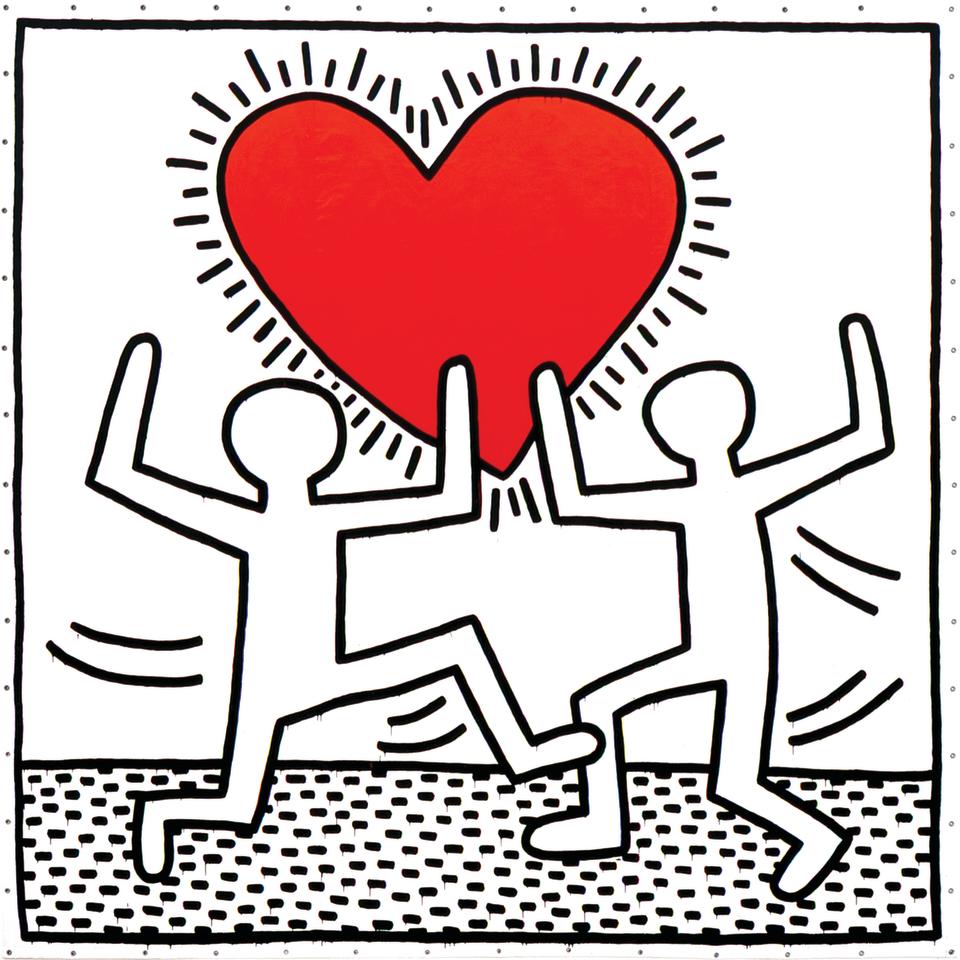
Eli Broad and his wife, Edythe, began collecting art in the ’70s. One of their first acquisitions was a Van Gogh drawing bought in 1972 for $95,000. In the ’80s, they switched to collecting postwar and contemporary art.
“Eli Broad was one of the first major collectors of Keith Haring,” says Jeffrey Deitch, who in 2013 was the director of the Los Angeles Museum of Contemporary Art, which sits across the street from what would become The Broad. “His support of Keith was very significant. He bought very early on. Eli Broad was very committed to art that had a social angle and addressed social issues.”
The Broad, which encompasses 120,000 square feet, is home to the philanthropic couple’s collection of 2,000 works from 200 artists including Jeff Koons, Ed Ruscha, Roy Lichtenstein, Andy Warhol, Cindy Sherman, Jean-Michel Basquiat, Barbara Kruger, George Condo, Takashi Murakami and Cy Twombly. There are eight Haring pieces, six of which are in the current exhibition.
Haring had a short but prolific art career. In 1978, he arrived on the New York art scene from a small Pennsylvania town to study at the School of Visual Arts. He soon became immersed in lower downtown New York’s art world with other creatives, including Basquiat, Warhol and Kenny Scharf.
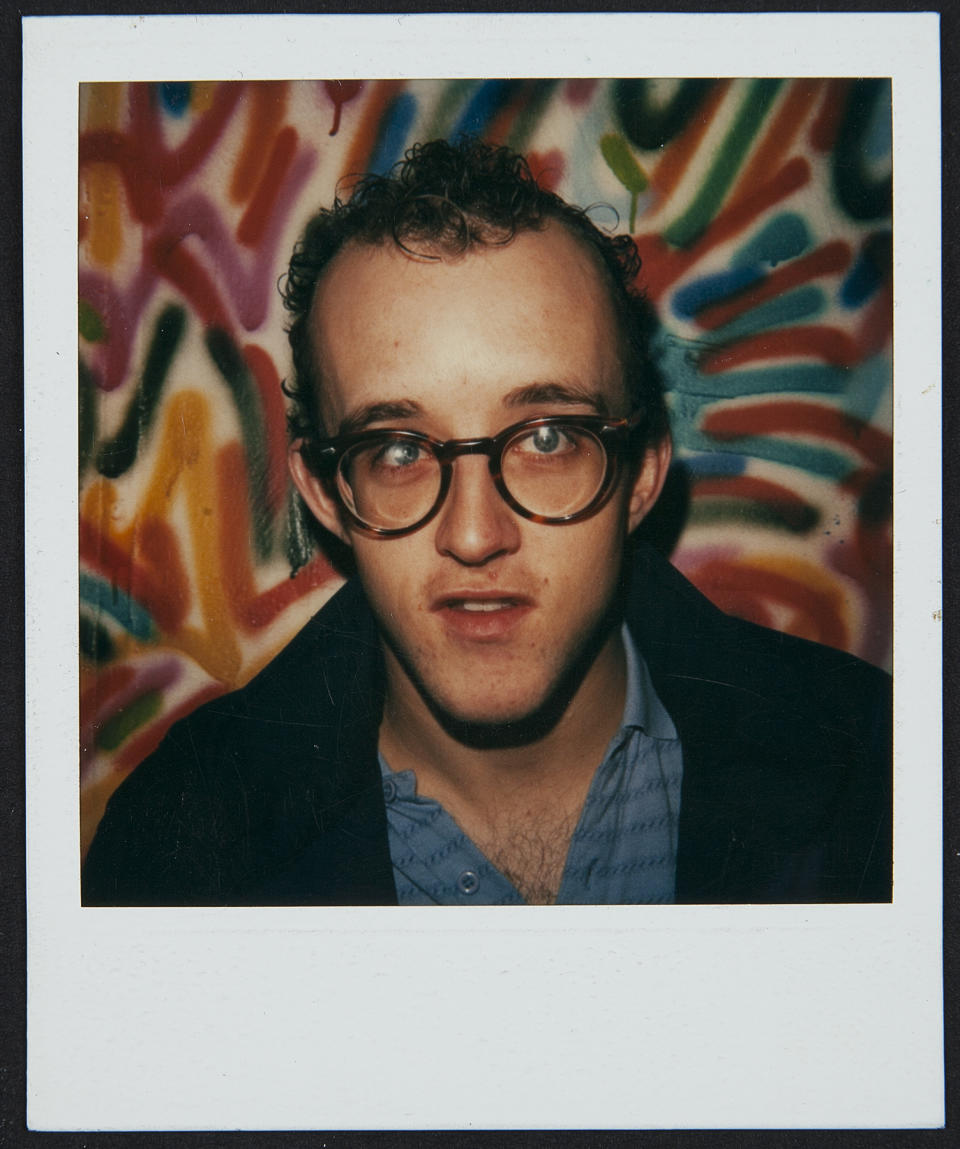
At the beginning, Haring grabbed public attention by creating white chalk drawings on black, unused advertisement backboards in New York’s subway stations. He later became known for his energetic linework, vibrant colors, and images of barking dogs, flying saucers and large hearts.
He dabbled in fashion, too. After Haring was featured in Paper magazine, British fashion designer Vivienne Westwood asked to meet the street artist. He presented her with two large sheets of drawings she turned into textiles for her fall 1983 “Witches” collection. Madonna, Haring’s friend, wore a skirt from the collection in her 1984 music video for the single “Borderline.”
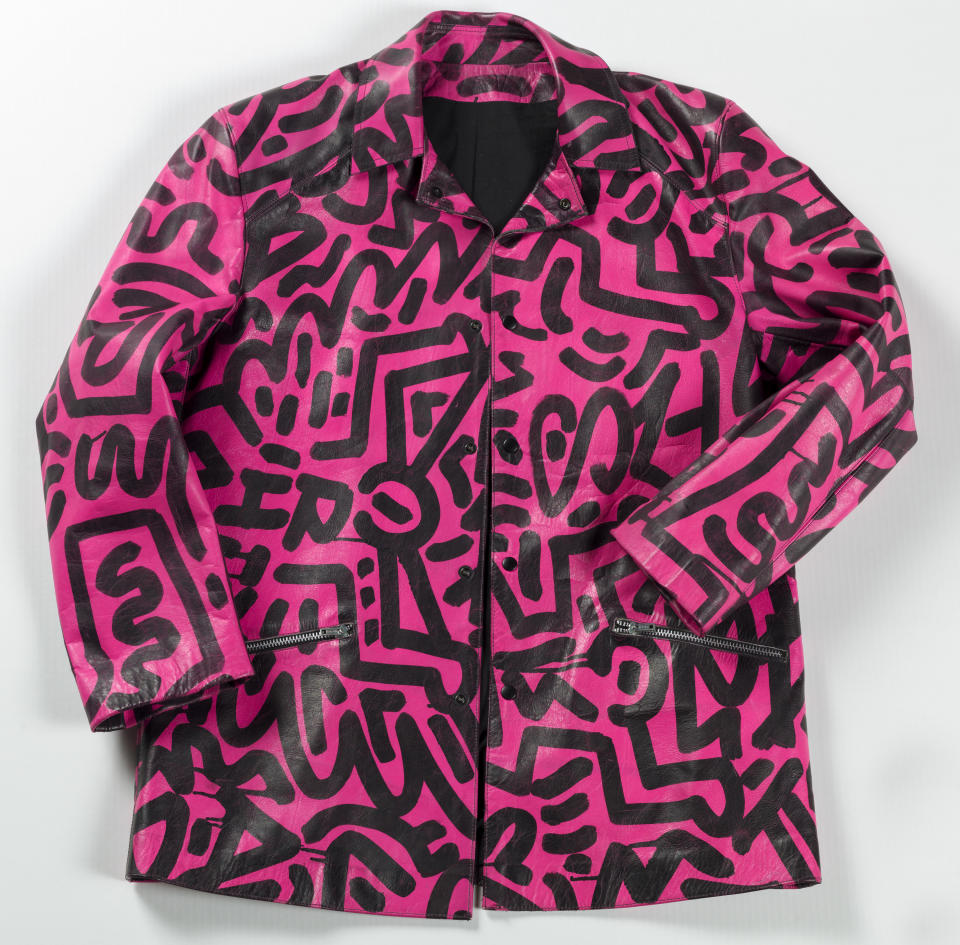
He painted on clothing. Somali model Iman was seen wearing a denim jacket he had decorated.
To bring art to the people, Haring in 1986 opened the Pop Shop in New York’s SoHo, selling T-shirts, badges, posters and other items emblazoned with his art images that were sold at relatively democratic prices. By this time, Haring’s artwork was taking on more socio-political subjects about AIDS, the anti-apartheid movement, nuclear disarmament and the crack cocaine epidemic.
Four years later, the artist died at 31 from an AIDS-related illness. In little more than a decade, he produced more artwork than most people do in a lifetime.
“I think it is interesting to see how Keith’s art really resonates today, and surprisingly with the young. To them, he is a hero. He was out and unashamed at a time when it was not easy to be out. He stuck up for injustice. He fought the fights for HIV and AIDS,” says Gil Vazquez, who knew Haring and is now the executive director and president of the Keith Haring Foundation in New York City.
The foundation was instrumental in organizing The Broad exhibition by loaning 67 pieces to the show, while another 42 came from private collectors. “I always try to point out that Keith’s work is deceptively complex,” Vazquez says. “It looks very simple on the surface, but as you follow the progression of his career, you can see the growth in those 10 years.”
The Keith Haring exhibition starts with works from the late ’70s and ends in 1988. It shows the various mediums the artist used including video, sculpture, drawing, painting and graphic works. Haring’s stick figures outlined in black and filled in with vivid colors have sometimes been likened to comic-book images, but they were popular and carried a message, such as “ignorance = fear,” and “silence = death.”
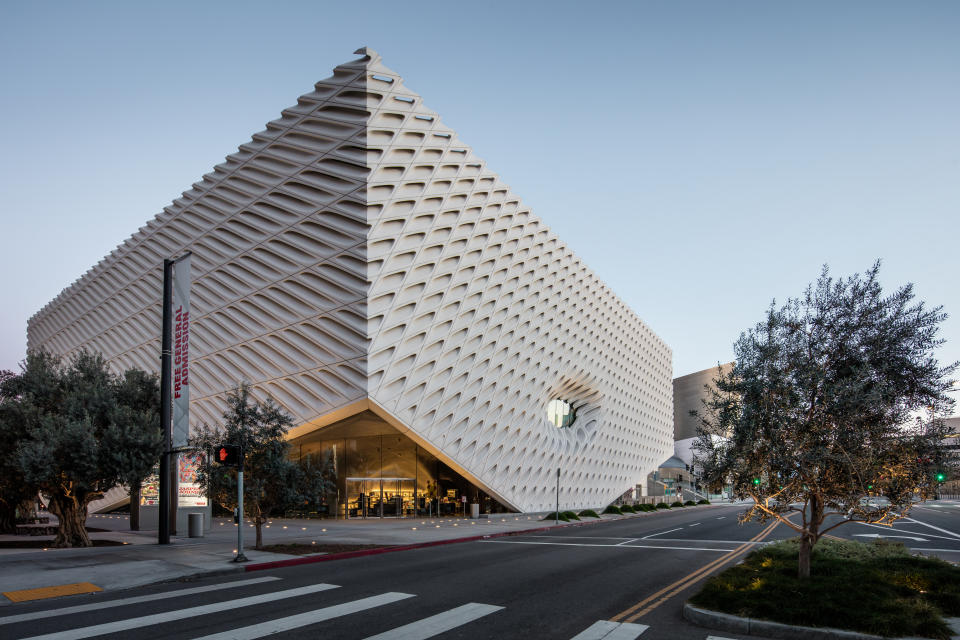
Sarah Loyer, The Broad’s curator and exhibitions manager, is eager to see how the public will respond to Haring’s work. “He’s really a part of popular culture. His imagery is saturated into our culture. Even for visitors who may not know his name, they’ll probably be able to recognize some of his work,” she says.
The museum staff had a difficult time whittling down so many of the artist’s creations into a 10,000-square-foot area. “There’s a gallery dedicated to his student work, including experimental performance videos, work with different Xeroxes and collages posted in the streets,” the curator says. “There are a few galleries from the early 1980s when he had his first major gallery exhibition and really when he exploded onto the international scene.”
There is also a gallery with Haring’s super bright Dayglo works inspired by hip-hop and break dancing, originally shown in the basement of the Tony Shafrazi Gallery in New York. One gallery will take a cue from the Pop Shop, displaying archival posters, T-shirts, buttons, condom cases and Swatch watches.
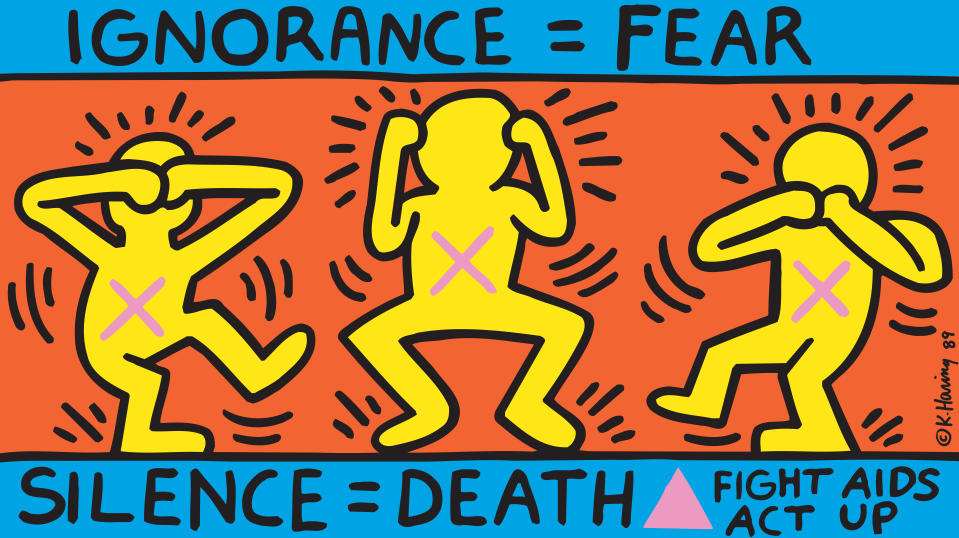
The last gallery features significant works from the late ’80s that are accompanied by framed posters illustrating the artist’s activism in the HIV/AIDS crisis.
The museum gift shop will stock several items incorporating Haring’s images, including “Radiant Baby” and “Dancing Dog” T-shirts, backpacks, sunglasses, and onesies for babies.
Vazquez of the Keith Haring Foundation believes his artist friend would be pleased his work, with its social commentary, will be seen by thousands. “I think he would be proud of how people connect to his art, to him and to his message,” Vazquez says. “I think he would be proud of what he was able to accomplish in his short life.”
.
Best of WWD


